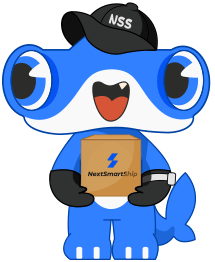Cross-selling is the practice of pitching complementary products or services to existing customers. It is an indispensable useful marketing strategy capable of increasing your eCommerce revenue and customer lifetime value. In this article, we cover all you need to know on the subject.

Benefits
Increased sales: Since every customer buys more from your store, you’ll enjoy increased sales and revenues.
Enhanced customer loyalty: Anticipating your clients’ needs will make them more content with your brand. This will increase their commitment to buying from your store.
Reduced administrative costs: it costs less to fulfill one order with multiple items than handling several with a single product.
Factors you need to consider before you cross-selling
Before you start cross-selling, you need to ensure your customers will appreciate your efforts. To do so, ask yourself the following.
Does the product improve on the product the consumer has already bought?
Cross-selling will only work the product on offer complements the original acquisition. Whenever you are cross-selling merchandise, it should enhance the functionality of the user’s initial purchase, or at the very least, extend its usable lifespan.
Will the item really help them?
There are scenarios where a complementary product won’t benefit the consumer. For instance, although a specific type of “selfie stick” might go well with a smartphone your customer just purchased, it wouldn’t be an ideal cross-sell if they don’t like taking selfies.
Know your customer before you attempt to cross-sell. Put yourself in their shoes and ask yourself how they’re going to use the product. Then, if you have something you believe would help them, go ahead and pitch it to them. This may seem more relevant to brick and mortar shops, but it works for eCommerce too.
Are your customers willing to spend more?
If your customer indicates they are only willing to buy one product, it helps to respect their wishes. You may lose them if you insist on cross-selling
Best cross-selling strategies
Drip Email campaigns
Drip emails are a remarkably effective cross-selling tool. It’s almost always better to give customers breathing room before offering complementary products. Instead of contacting them individually via email, you can use drip emails to automate the process.
Here’s a quick example; consider a customer who buys one of your digital cameras. You may add their contact details to a drip campaign that introduces landscape photography in the first email, shares landscape photos from other aspiring photographers in a second, and presents a list of landscape camera lenses in the third.
This strategy introduces the complementary products as part of your drip email process. Instead of trying to convince your client to buy an additional product right away, you can send a list of emails that explain its benefits without seeming too aggressive.
Drip campaigns also let you automate this process, so you can save time and determine the most effective emails by studying click, open, and reply rates.
Added services
You may cross-sell to clients is by offering additional services. For example, if you sell digital cameras, you might consider offering a camera repair service or the other way round.
Bundled sales (complimentary items)
Bundled sales occur when two or more complementary items are sold together. They are often ordered at a discount to increase the perceived value of purchasing several products at the same time.
Product bundling confers the following benefits.
Marketing simplicity: If you sell 10 products, you’ll need to advertise each one by itself. This won’t be necessary if you put them in a bundle. All you’ll have to do is market the bundle.
Inventory reduction: Provided that you do it right, bundling can help you move unpopular products. You can put less popular merchandise together with trending items and market them as a value pack.
Product recommendations
You can sell additional services or products by studying a prospect’s previous purchases and activities on your website. If you find that a consumer has been viewing smartphones and gaming consoles, you can add them to an email marketing campaign specifically designed for those products or use tracking pixels to promote the same products to that individual after they leave your site.
Promotions
If you are currently promoting any of your products, it’s a great opportunity to cross-sell to a client.
Customers will likely perceive this technique as an attempt to get sales, instead of a highly specific targeting effort, so it is less risky than the other methods discussed thus far.
Here’s an example:
If you have an end-of-year discount on your headphones, you could contact any consumers who have shown previous interest in such items to inform them of the sale.
Content marketing
Some consumers may not perceive the benefits of your products. They may know that a camera is useful, for example, but the benefits of having extra lenses may require that you educate them further.
Giving your clients educational content will demonstrate the value of each complementary product you have on offer, along with how it will help your customer.
Sending them blog posts, eBooks, or adding them to an email course are reliable ways to prove your expertise, earn their trust, and increase their willingness to buy from you.
Note:
Choosing the ideal time to cross-sell is as important as the initial sale itself. If you pitch a product to your client at an inappropriate time, it may irreparably hurt your relationship.
That said, remembering the main objective of cross-selling – convincing the customer to buy items that complement their original purchases – will help you pitch the sale at an appropriate time.
Where to show cross-selling offers
As with everything in eCommerce, where you show your cross-selling offers largely depends on the behavior of your target market. While some customers won’t mind seeing additional product suggestions in their cart, for example, others will find it distracting. We’ll review the most appropriate locations to put your offers and so you can pick the most appropriate for your situation.
The shopping cart
The shopping cart is the part of an eCommerce website that displays all the products a customer has selected from the store. It enables customers to review their selections and make changes (like adding or removing products) where necessary.
The thank-you page
If you’d rather not distract your customers during the buying process, you may wait till they finish the purchase and pitch related products on the thank-you page.
It’s a great place to cross-sell because your customer still jams their credit card within reach.
Third-party advertising
One other way you could pitch cross-selling offers is through advertising, particularly retargeting. With Facebook ads, you can target previous customers with offers they might take like.
Note: if you have a high shopping cart abandonment rate, you shouldn’t try to cross-sell within your shopping cart. Doing so may distract your customers and affect your sales further.
Conclusion
Repeat revenues are incredibly crucial for eCommerce growth. If you don’t have a consistent cash influx, it can be hard to anticipate trends and implement the strategies needed to expand your enterprise. But, gaining new customers is a complex and costly process.
For this reason, it’s vital to take full advantage of the sales you’ve already made and convince your current customers to continue buying from you. Cross-selling is a highly effective way to do so.
If you need a reliable order fulfillment partner to help you handle inventory, deliver packages, and process returns while you focus on growing your eCommerce business, Nextsmartship’s here to help. We have a range of custom order fulfillment solutions suitable for any business, large or small. Contact us today.


